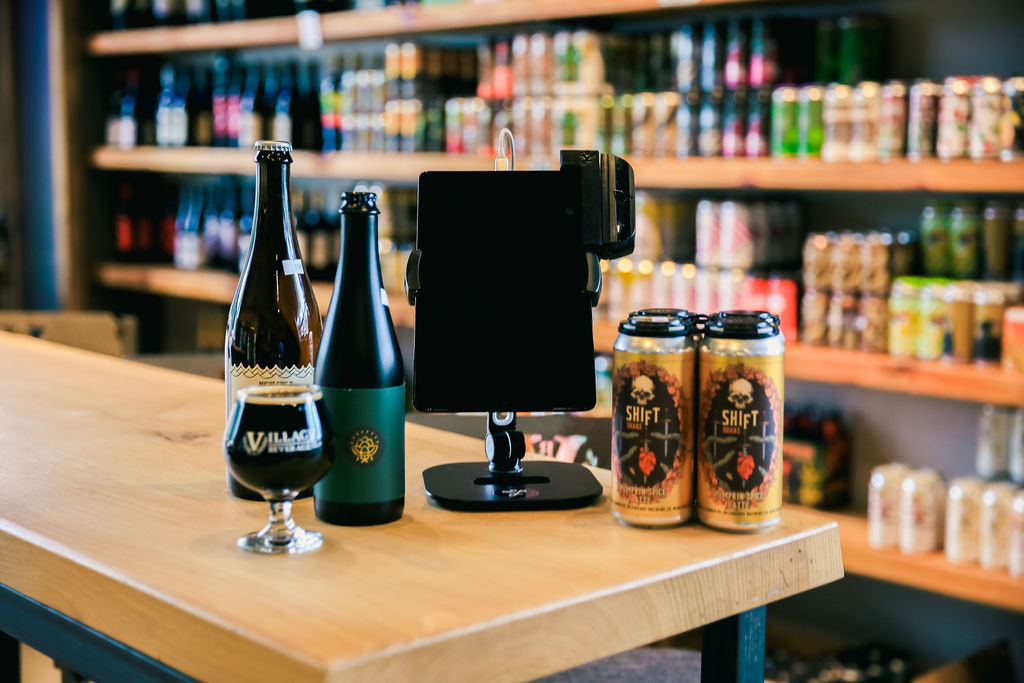How POS and Inventory Systems For Small Businesses Should Work Together
Syncing your POS and inventory systems for small businesses helps you focus on growth! We outline why it’s imperative that you manage your inventory and the best practices to be successful.

If you’re running a small business, you’ve probably laid awake at night thinking about countless What If’s. After all, it’s a lot of time and effort to get things going, and a lot of responsibility to keep the wheels on the bus!
We’ll let you in on a (mostly) set-it-and-forget-it secret to running a hospitality business: inventory management. Below outlines why it’s imperative that you manage your inventory, the best practices for doing so, and how automating the synchronization of POS and inventory systems for small businesses is key to your success.
Why Managing Inventory for Small Businesses is Crucial to Success
Stay Organized
The first obvious reason that your small business should be managing inventory is organizational. It keeps your staff and your business organized, and can ultimately save you time (and money!) down the road if you are keeping track of what you have and what you’re selling. Plus, if things are well organized in the back of the house, chances are things will run smoothly when your staff is serving guests.
Software automation will save you time and money, too. But more on integrating POS and inventory systems for small businesses later on!
Minimize Waste and Maximize Profits
You’re in the business of serving perishable goods that have a specific life expectancy! You need to sell what you have while it’s fresh. Otherwise, you’re losing money on wasted food or losing money on unsatisfied customers.
When you’re properly managing your inventory, you’ll also be able to tell if you’re losing precious stock in ways you wouldn’t normally expect. Perhaps you have a brewer that is making a lot of red IPAs because it’s their favorite, but the beer keeps getting poured out. If you look into reporting, you may find that your guests’ taste buds don’t agree with the brewers’, and that’s why the beer is getting wasted. This example proves how important it is that 1) production and FOH work together and 2) reporting is applicable to both sides of the business. You won’t be able to identify problems like this unless you have tabs on your inventory and reporting.
Exceed Customer Expectations
Finally, you can gain a solid fan base from practicing good inventory management. If your customers are consistently eating fresh, delicious food in your taproom, they will come back again and again.
If you promote a new pistachio pizza all week on social media, but run out of nuts by Thursday, you will disappoint weekend customers. Don’t beat yourself up if this happens—it does to everyone, especially in the beginning—but this kind of problem is something inventory management solves!

4 Best Practices For Inventory Management
Here are some best practices when you’re starting to keep track of your inventory:
1. First In, First Out
Known as FIFO, this is a good guideline to ensure the ultimate freshness of the food and drinks you’re selling. If you use ingredients in the same order they come in, you’ll guarantee what you’re serving is fresh and you’ll also minimize waste.
You should follow a similar rule when it comes to merchandise. Make sure you’re selling older shirts and hats first, and whipping out that new stuff later. Your customers want to be outfitted in the latest and greatest, after all!
2. Sell Through Your Online Store
Here’s where that older merch comes in—sell it on your online store! This is also a great place to sell growlers, crowlers, and cans of any beer that has been sitting in a keg for too long.
Another way to move through past merch is to make BOGO deals and other promotions for your Loyalty Program members. This makes way for the new stuff, outfits your biggest fans, AND incentivizes people to join your Insider Program!
3. Accurate Forecasting
Ensuring that your forecasting is accurate separates good inventory management from great inventory management. Forecasting tracks how much of something you’ve sold and estimates how much of it you’ll sell in the future. Accurate predictions obviously require robust data, which will link your POS and inventory systems for small businesses.
The first part of this is identifying what’s popular and updating your menu. Once you know the unpopular items, you know not to buy bulk purchases of those things. When you’re aware of what sells the fastest, you can stock up before busy weekends or big holidays.
Here are 2 insights to pay close attention to in your robust reporting:
- Hourly sales by product: This report shows you the exact time each product is ordered, instead of just the time a customer transacts. (Which comes in handy for those Happy Hour guests that end up staying until close!) Insights into exactly when items are ordered is important because it enables you to curate timed menus with only the most popular items, and you’re not keeping extra ingredients in stock and wasting them.
- Hourly total sales: Track order trends by the hour of the day to determine what times you’re selling the most, and when you need to staff up. Knowing this data also lets you plan fun events when you’re typically slower so you can incentivize visitors!
The time of year and weather also plays a part in accurate planning. The ingredients for your tomato bisque should not be on the forecast radar for the warmer seasons, for example.
4. Audit Inventory
You were warned that inventory management is (mostly) a set-it-and-forget-it secret! It’s a good idea to check in manually on stock once every few months, even if you have software in place. This depends on your business, but restaurants typically do monthly audits and spot-check sporadically. Even if you’re satisfied with how things are going, you may find hidden inefficiencies.
Syncing POS and Inventory Systems For Small Businesses
When you’re hunting for a point of sale system, business owners tend to focus on buzzwords like QR code ordering, payment processing, and sale reporting. But, how a POS handles inventory management and how that data flows into other systems is what will save you the most time in your daily operations. Let’s dive into syncing POS and inventory systems for small businesses.
Real-Time Inventory Depletion
Pre-pandemic, you were likely making a bulk of sales in your actual taproom or restaurant. Nowadays, customers are more likely to order to-go from your online store, or see you at outdoor events like a farmers’ market. That means that you could be selling from multiple locations at once, and your inventory data needs to reflect these depletions in real-time so you aren’t selling anything online that you suddenly don’t have in stock.
So, you need to get all of that information into one cloud-based system that automatically updates. After all, your staff doesn’t have time to manually enter that information because they’re busy filling pints and charming your guests. That’s where synced POS and inventory systems for small businesses come into play—you and your hustling staff can focus on selling, and your POS can focus on reporting.
Seamless Integration of POS and Inventory Systems for Small Businesses
To ensure the information in your POS and inventory system sync up accurately, look for a POS provider that offers a seamless integration with your inventory management system. Automating this flow of data from your POS and both in-person and online transactions helps maintain error-free inventory counts, which are vital to accurate forecasting and making future decisions for your small business.
This not only saves precious time for your front-of-house staff to serve guests instead of number-crunch, it also opens the door for a robust accounting integration. You can automate the creation of journal entries for invoices and payments and keep your balance sheet updated—all without duplicate entry.
The Perfect POS and Inventory Systems for Small Businesses Solution
To recap, integrating your POS and inventory management system reap these rewards:
- Save time by eliminating manual data entry
- Increase inventory accuracy with real-time data automation
- Gain complete visibility into key metrics to better forecast future inventory needs
All’s to say that syncing your POS and inventory systems for small businesses ultimately helps you focus on growing your business!
If you’re in the market for a point of sale that supports seamless inventory management integrations, look no further! Arryved POS is a match made in integration heaven with the following softwares:
- Yellow Dog Inventory has developed a robust integration to handle Retail and F&B and Inventory Management with Arryved.
- Ekos lets you eliminate manual processes and duplicate entries during your beverage production, all while gaining complete visibility into key metrics that help you focus on growing your beverage business.
- QuickBooks imports your daily sales into their system. That way, you can cross-reference your point of sale reporting with your bank deposits.
Learn more about Arryved POS’s commitment to evolving with your small business today!

